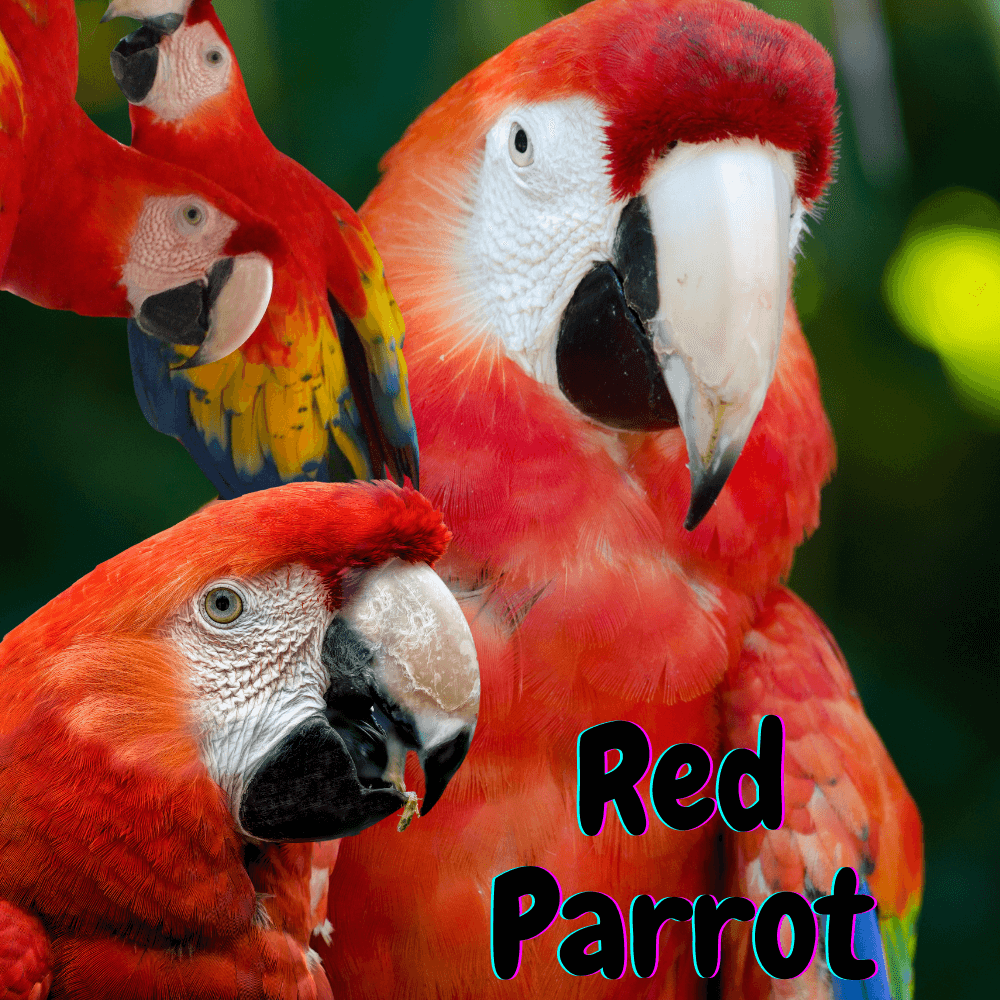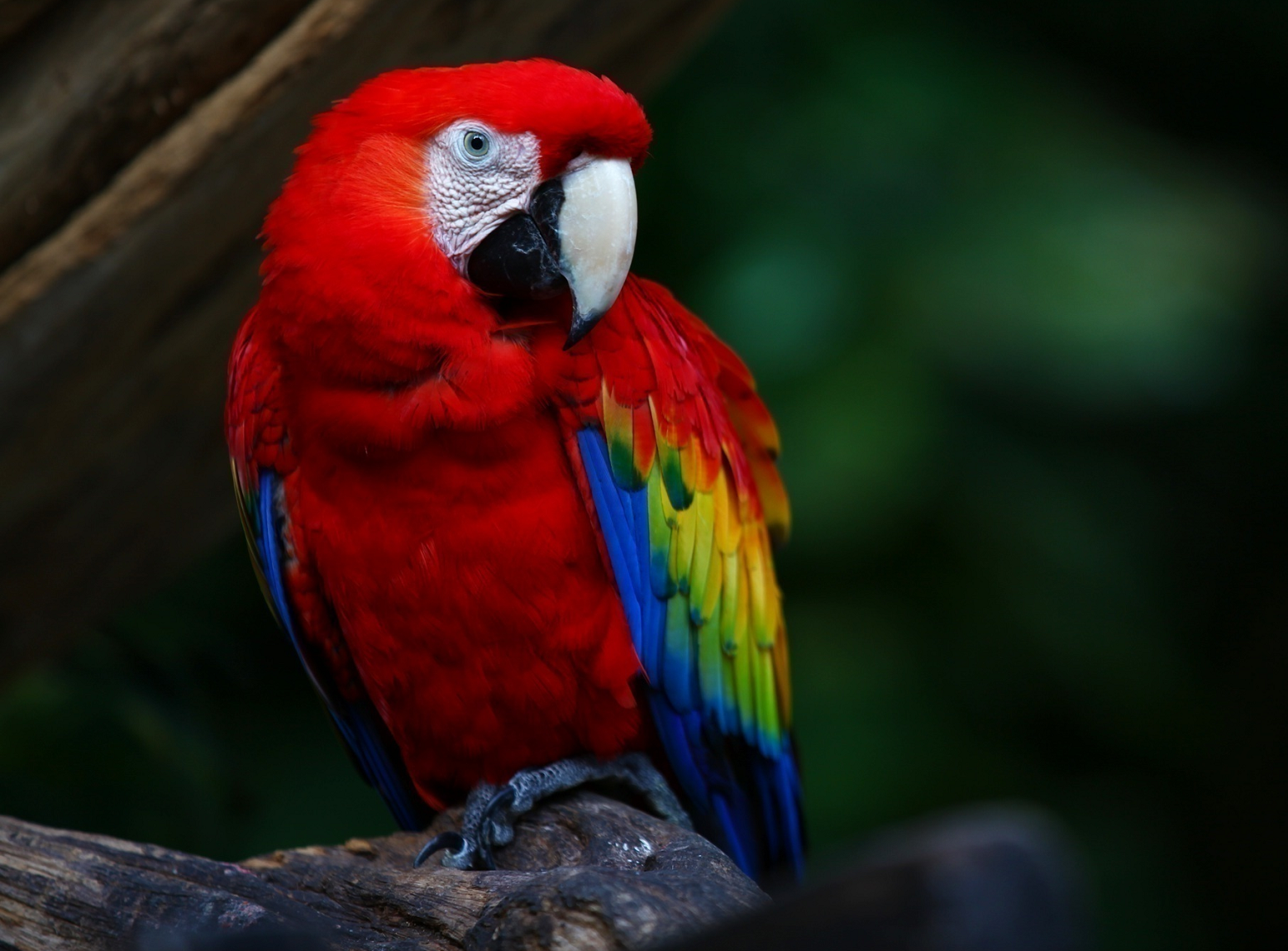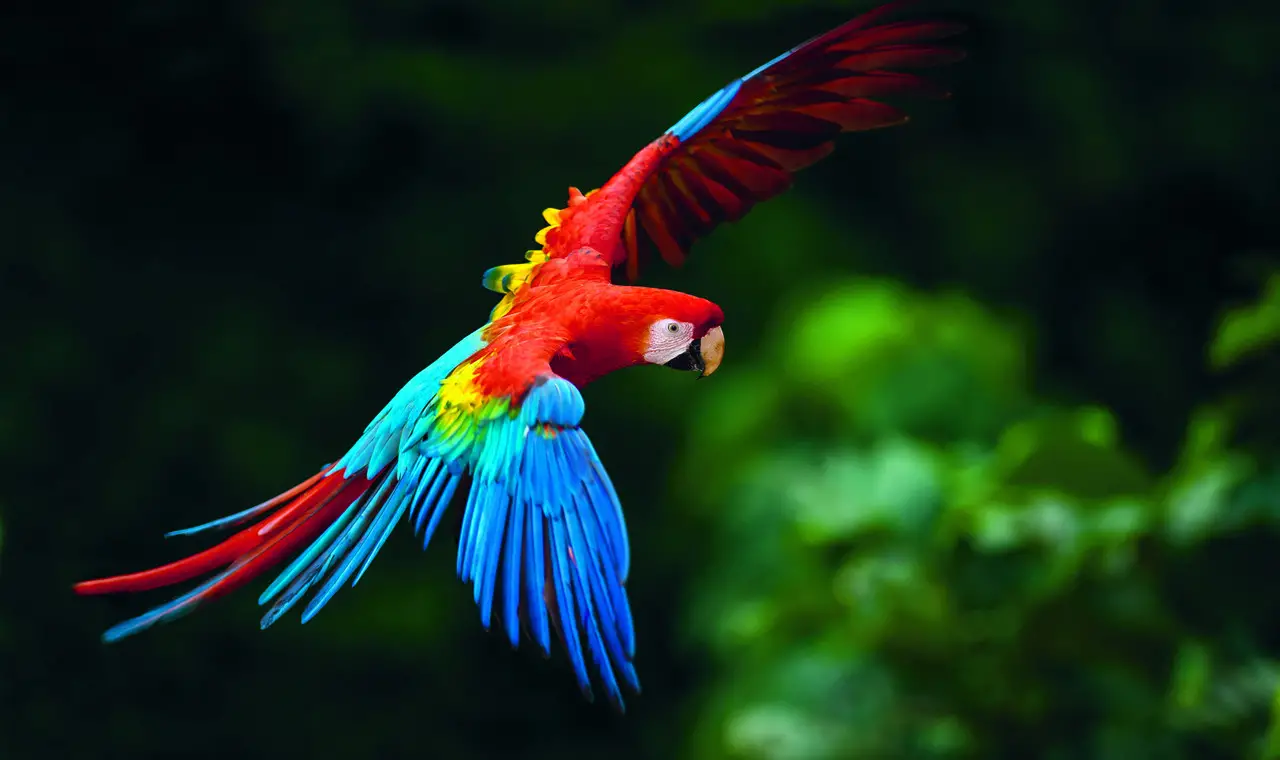
Kevin McGraw, an American researcher at the University of Arizona, has been working on the color of psittacines for 7 years. No doubt, he is passionate: ” Parrots are peculiar birds, due to the fact that they display almost without exception fantastic colors with very little variation in coloration within the same species” he marvels.
This time, it’s at the heart of the chemistry of the pen he went to investigate! The unexpected results of his work were recently published in the journal Biology Letters…
Did you know that of the 350 or so species of parrots, 80% of them wear red in their plumage? This beautiful color is related to the presence of Pigments, and biochromes (such as carotenoids, of plant origin, widely used by birds or Pisces to produce colors ranging from yellow to orange to red).
But the parrots, they preferred to do in originality! « We discovered that all parrots used the same set of Molecules to color” explains the biologist.
Indeed, he and Mary Nogare studied 44 species of Psittacidae… and their red feathers using HPLC (Chromatography High-Performance Liquid). They discovered a series of 5 molecules called polyene lipochromes, or more simply psittacofulvins.
“It’s a unique type of pigment that doesn’t exist anywhere else in the world!”
Another particularity: these pigments are only present at the level of Follicles ripening at the base of red feathers. And according to another recent study, they act as antioxidants to protect the animal’s cells from the action of Radicals. In short, not only is this bright ruby color perfectly inimitable but it also contributes to the balance of the health of these fascinating birds! What more could you ask for?
Types of Red Parrots (With Pictures)
- Female Eclectus
- Australian King Parrot
- Galah cockatoo
- Moluccan King Parrot
- Black-Winged Lory
- Purple-Naped Lory
- Crimson Rosella
- Chattering Lory
- Red and Green Macaw
- Red and Blue Lory
- Violet-Necked Lory
- Red Lory
- Western Rosella
- Cardinal Lory
- Blue-streaked Lory
- Collared Lory
- Yellow-bibbed Lory
- Black-capped Lory
- Papuan Lorikeet
- Golden-mantled Rosella
- Crimson-bellied conure
- Pohnpei Lorikeet parrot
- Purple-bellied Lory
- Kuhl’s Lorikeet
- Stephen’s Lorikeet
- Fairy Lorikeet
- Red Parrot Names
Red parrot

Scarlet Macaw
Behavior & character
The red macaw needs a lot of attention, it is not autonomous and needs interaction with its master or congeners. Very attached to those around him, he can develop a form of separation anxiety if he feels more isolated than usual.
This parrot is sure to make you laugh with its unique attitude and the energy it gives off! The macaw knows how to imitate human mimicry, sing, dance, raise his paw, and shout… He imitates absolutely everything he can and pronounces a lot of sounds that he assimilates very quickly.
Everything surrounding a red macaw is considered a toy: it has a constant need to play and be entertained.
- Affectionate (5/5)
- Ability to sing (4/5)
- Ability to speak (5/5)
- Independent (1/5)
- Pronunciation quality (5/5)
- Sociable (5/5)
Red parrot
Appearance & Features
- Head: massive beak.
- Eyes: a circle of bare skin around the eyes. They are pale yellow in color.
- Beak: light upper mandible, dark lower mandible.
- Paws: brown and sometimes dark grey.
- Tail: long tail. The rump and base of the tail are sky blue.
- Color (s): white cheeks, red plumage, wings striped yellow, blue feathers.
- Sexual dimorphism: low sexual dimorphism in young people who will have dark eyes while adults have light yello eyes.
- Scientific name: Macau macaw
- Order: Psittaciformes
- Family: Psittacines
- Genus: Macaw
- Descriptor: Linnaeus
- Year description: 1758
- MALE SIZE 85-85 cm
- FEMALE SIZE 85-85 cm
- MALE WEIGHT 1-1.3 kg
- FEMALE WEIGHT 1-1.3 kg
Other species
Several subspecies are found in Macaws with the difference of yellow on the back and the presence of green feathers.
- The subspecies with green: the birds are larger and have a more docile character. They sport one to 3 lines of yellow on the back, followed by green feathers.
- The subspecies with yellow: birds are thinner and more nervous. Their back has yellow feathers over a length of 15cm.
Habitat
The scarlet macaw is native to Central America and northern South America. It is found in Central America from southeastern Mexico to northeastern Nicaragua and from Costa Rica to Panama. An isolated group of macaws occurs in northern Colombia in the Sierra Nevada, near the Magdalena Valley.
But it is in the south of America that we find most of this bird, from the Amazon of Venezuela and the Guianas to Ecuador, Peru, Bolivia, and Brazil.
There is a safeguarding program for the preservation of the Red Macaw in its natural environment. This program is implemented by Maca Recovery Network in Costa Rica.
Red parrot

Nesting, reproduction
The main difficulty encountered for the reproduction of the Macaw is the constitution of a couple that works. As soon as they are united, macaws are very faithful parrots and demonstrative of interests between them. They can begin to reproduce around the age of 5. Depending on the pair (in captivity), they breed all year round.
This bird breeds once a year. The female usually lays two eggs with an incubation time of 27 days. Young macaws leave the nest at the age of 3 months and become independent around the age of 4 or 5 months.
Feeding
The Red Macaw is vegetarian and eats mainly fruits and seeds. He especially likes apples, bananas, and other fruits, as well as nectar and buds. Its beak allows it to break nut shells very easily, which is why you can give it wholly.
Just like the cockatiel or the African Grey parrot, its diet must be varied. It must consist of 60% complete feed in granules.
You can offer him 30% of the millet in bunches and a Tropimix egg mixture. Keep 10% to bring him fruits, vegetables, a little rice, or pasta. In addition to the fact that a diet consisting solely of seeds can lead to obesity, your Calopsitte can develop calcium and vitamin deficiencies. The Tropicana and Tropimix blends are recognized and of good quality for parrots and parakeets.
Some foods are deadly for macaws: avocado, parsley, and rhubarb are prohibited. Never give him a human diet based on ready meals, sauces, sugars, cold cuts, bread, meat, spices, and milk … Macaws do not eat mealworms or insects.
Seed mixtures
These mixtures are an exclusive feeding mode and it becomes difficult to modify them. The scarlet macaw will refuse foods that are different, even if they are fruits or seeds that it would have found in its natural environment. A diet based solely on seed mixtures can lead to deficiencies in vitamins A, calcium, iodine, etc.
It can also sort the seeds and remove those that are nevertheless beneficial. It is then necessary to favor the granules to avoid this selective sorting behavior. If you opt for a food made from mixed seeds, always choose a high-quality mixture accompanied by fruits and vegetables daily. Vitamin and mineral supplements are recommended. Learn + about bird feeding
Fruits
Fruits should be washed and dried, and cut into small pieces. Peelings contain a lot of vitamins, so you can give them to your bird as long as you wash the fruit well.
Many fruits (carrots, tomatoes, grapes, kiwis, apples, strawberries, bananas, pineapples, and raspberries …) are appreciated by the Red Macaw, almost all seasonal fruits and vegetables. You can incorporate soaked or sprouted seeds into the preparation of fruits.
Life expectancy
Red Parrot Names
SOURCE:PetTube
Related Article:





















